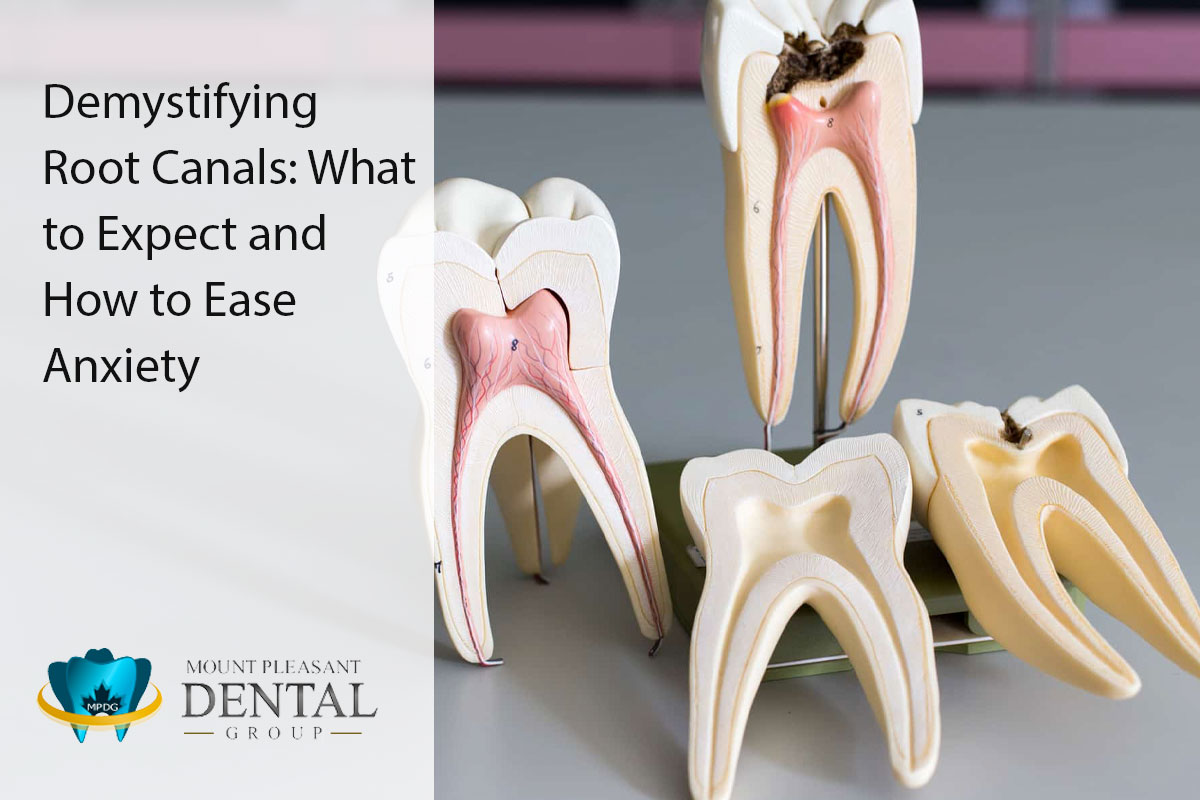
Demystifying Root Canals: What to Expect and How to Ease Anxiety
Worried about a root canal? You’re not alone, and understanding the process can ease your fears. Keep reading to learn what to expect during a root canal and get tips for managing anxiety.
What is a root canal and why is it necessary?
A root canal is a dental procedure that removes infected or damaged pulp from inside a tooth. The pulp, essential for tooth development, contains blood vessels and nerves. When infected or damaged, typically from decay or injury, it can lead to pain and more serious dental issues if not treated. The primary aim of a root canal is to save a tooth from extraction. By removing the infected pulp, the dentist stops the infection from spreading, letting you keep your natural tooth and avoiding the more invasive and expensive options like dental implants or bridges.Signs that you may need a root canal
If you’re experiencing certain signs, it might mean you need a root canal. Check with your dentist if you notice:- Persistent toothache: A severe and lasting toothache that doesn’t get better with over-the-counter painkillers may signal an issue with the pulp.
- Sensitivity to hot and cold: Feeling sharp, lingering pain with hot or cold foods could indicate a problem with the pulp.
- Swelling and tenderness: Swelling and tenderness in the gums around a tooth may be a sign of infection.
- Discolouration: If a tooth becomes dark or discoloured, it could mean the pulp is damaged or dying.
- Prolonged sensitivity to pressure: Discomfort or pain when biting down may suggest the need for a root canal.
The root canal procedure explained
The root canal procedure typically involves the following steps:- X-ray and examination: Your dentist will start by taking an X-ray of the affected tooth to assess the extent of the damage. They will also examine your tooth and gums to determine the best course of action.
- Numbing the area: Before beginning the procedure, your dentist will administer a local anesthetic to ensure that you do not feel any pain during the root canal. They may also place a dental dam, a small rubber sheet, around the tooth to keep it clean and dry during the procedure.
- Accessing the pulp: Once the area is numb, your dentist will create a small access hole in the affected tooth to reach the pulp chamber.
- Removing the infected pulp: Using specialized tools, your dentist will carefully remove the infected or damaged pulp from the tooth’s root canals. They will also clean and disinfect the area to eliminate any bacteria or debris.
- Filling and sealing the tooth: After the pulp is removed, your dentist will fill the root canals with a rubber-like material called gutta-percha. This material helps to seal the tooth and prevent further infection.
- Restoring the tooth: Depending on the extent of the damage, your dentist may recommend placing a dental crown over the treated tooth to provide additional protection and restore its strength and appearance.
Tips for managing anxiety
Feeling anxious about a root canal is common, but there are strategies to enhance your comfort:- Communicate with your dentist: Share your concerns before the procedure for reassurance and answers to your questions.
- Deep breathing exercises: Practice slow, deep breaths to relax your body and mind, reducing anxiety.
- Distraction techniques: Use headphones to listen to calming music or an audiobook during the procedure for a more relaxed experience.
- Oral sedation: In severe cases, your dentist may suggest oral sedation in the form of a pill taken before the appointment to enhance relaxation.
- Relaxation techniques: Explore methods like meditation or progressive muscle relaxation to ease nerves before and during the root canal.
Aftercare and recovery
After your root canal, adhering to your dentist’s aftercare instructions is crucial for proper healing and complication prevention. Follow these general guidelines:- Take prescribed pain medication: Use any prescribed pain medication as directed to manage post-procedure discomfort.
- Maintain good oral hygiene: Continue regular brushing and flossing with a soft-bristled toothbrush and non-alcoholic mouthwash, as recommended by your dentist, to avoid irritation.
- Avoid hard or sticky foods: Protect the treated tooth by refraining from chewing on hard or sticky foods until it’s fully restored with a dental crown.
- Attend follow-up appointments: Keep all scheduled follow-up appointments for your dentist to monitor healing and ensure the success of the root canal.



